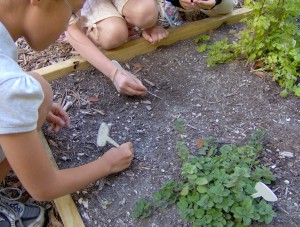Getting Down and Dirty: Studying Soil Samples from Around the Country

Originally appears in the Spring 2010 issue
Although we walk on it, dig in it and work in and around it, the much maligned soil is one of Earth’s natural commodities that are taken for granted. From the time we are very young, as soon as we come in from playing outside we are told to wash our hands in order to get that dirty “stuff” off. Far from being our enemy, however, soil is essential to our survival. Almost all of the food we eat, the fibers we use to manufacture our clothes, and the products we make from lumber originated from plants grown in soil. Almost all freshwater travels through or over the surface of soil before reaching the rivers, lakes, reservoirs and wells from which we draw it; and the respiration of soil microorganisms plays a major role in the carbon cycle.
When it was time for my upper elementary students to learn about soil, I wanted to design a significant scientific inquiry that would captivate their interest and give them that “ah-ha” moment that all teachers strive for in their lessons. I had seen their growing interest in scientific experiments and their curiosity about other places; so rather than analyzing only the soils in and around our community, we opened our inquiry to samples retrieved from around the country.
This content is restricted to subscribers only.
If you are not yet a subscriber, please consider taking out a subscription here.
If you are an existing subscriber, kindly log in or contact us at info@greenteacher.com for more information.










